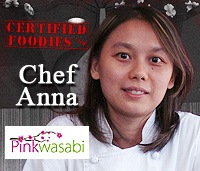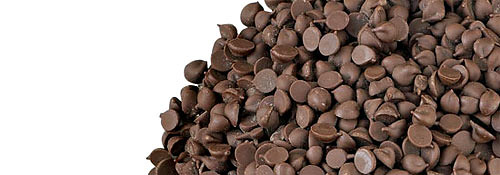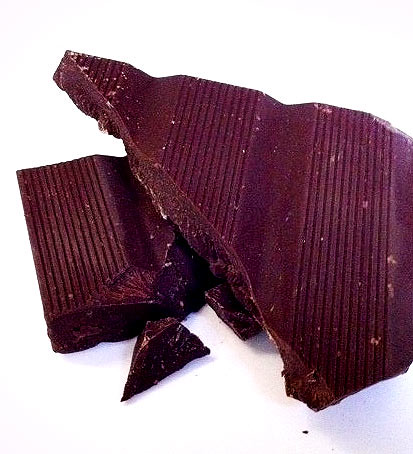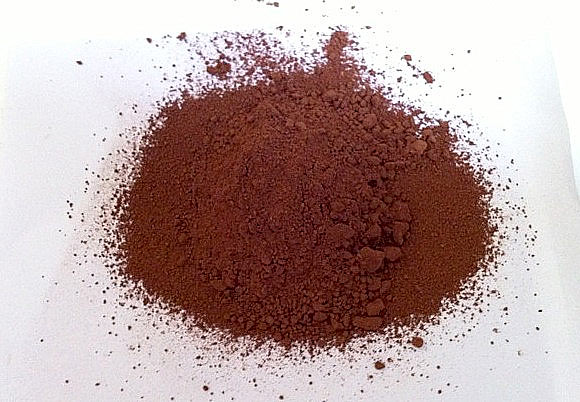I never met a chocolate I didn’t like.
– Deanna Troi, Star Trek: The Next Generation
Who doesn’t love chocolates? I mean, seriously, we see anything with the word CHOCOLATE and we start drooling. Come on admit it! 😀
Do you remember those days when a chocnut is just what you need to cheer you up? Nowadays, however, we are bombarded with a variety of chocolates. How, then, do you know you’re getting the good stuff?
First off, we need to know that there are two general classification of chocolates, couverture and compound.
Compound Chocolates
Let’s start with compound chocolates. These chocolates are the supermarket variety – cheap and mass-produced. These products may or may not contain cocoa butter. Those that do not have cocoa butter are made with shortening and/or substitute fats.
The percentage that you see on the bar of chocolate indicates the percentage of cocoa solids, meaning the amount of cocoa mass and cocoa butter.
Couverture Chococlates
Now this is the real deal. Couverture chocolates must have a minimum of 32% cocoa butter in order to be considered as such. Some brands use only cocoa butter while others mix in a bit of shortening for stability. Some of the well-known brand of chocolates we normally find in the grocery have a bit of shortening mixed into it to increase their tolerance for warmer temperatures. Ideal storage for pure chocolates is 20ºC.
Chocolates, much like wine, have different subtle flavor notes. These flavors notes are best savored when the chocolates are at room temperature.
Different chocolate makers use different blends of beans to create their own flavor profile.
The 3 main kinds of cacao trees are
- Criollo
- Forastero
- Trinitario
Aside from having their own blend of beans, different manufacturers also have varying amount of cocoa butter blended with their beans.
Say you an 80% chocolate. What this means is that 80% is made up of cocoa solids (cocoa mass and cocoa butter) and 20% sugar. Now, the proportion of cocoa mass and cocoa butter that makes up that 80% varies depending on the chocolate maker.
How can you tell if it’s couverture or compound? Well, aside from reading the label and checking the cocoa butter percentage, couverture chocolates have that clean melt in your mouth feeling.  Compound chocolates, on the other hand, leave an oily coating in your mouth.
Compound chocolates, on the other hand, leave an oily coating in your mouth.
So before you munch on that sweet treat, make sure you’re getting the real deal and not just a mouthful of sugar. 😉
This chocolatey post is written by Pastry Chef Anna of My Pink Wasabi. She is a Professional Chocolatier who studied at Ecole Chocolat Professional School of Chocolate Arts and graduated with honors. We love her kashi makis! Stay tuned for our full feature on her delicious treats. 🙂




uhh now i know whats couverture and compound..Im on couverture one 🙂
I had the same reaction. ^_^
^_^ I would always check the labels.Â
yummy chocolatessssssssssssssssss……..
now I know… very informative post! thanks!
Thank you 🙂
now I know 🙂 this is really a very good information for chocolate lovers like me 🙂
there’s one thing i would like to ask to Chef Anna: What is the co-relation of sweating while eating chocolates?
i love eating chocolates, but every time i eat it, i am sweating 🙁 yet it does not stop me from indulging hehe
Hi! that sounds like a question for your doctor. You might want to mention that next time you go for a check up. Your body is reacting to the sugars you are consuming, i think… best to let your doctor know 🙂 Thank you for reading my post.
Very interesting and informative! I love all things chocolate too and to get a sharper look into the actual kinds and different ways of making chocolate. Which do you prefer to cook with more, Couverture or Compound?
Hi there, i only use couverture chocolates. I would never sell a product that i personally would not eat. :)Â
Thank you!
Fantasticwork and think your doing well done job keep it up